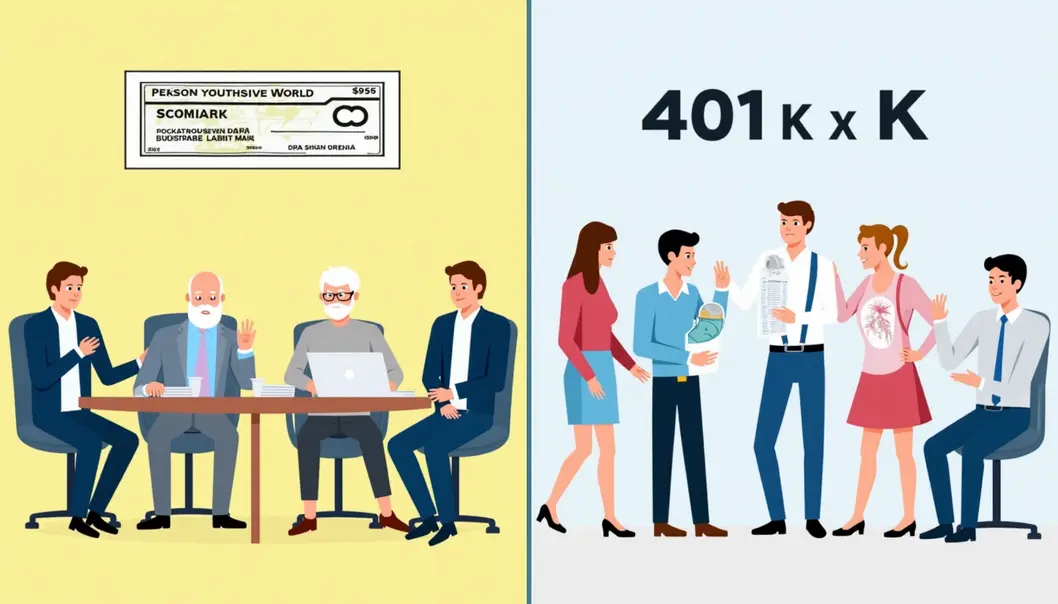As families plan for the future, understanding retirement options is crucial. The two primary types of retirement plans—pensions and 401(k)s—offer unique benefits and challenges. A pension guarantees a steady income stream for retirees, providing peace of mind, while a 401(k) account gives employees flexibility but requires active investment management. This article breaks down the key differences between these retirement plans. We’ll explore the structure, benefits, and risks associated with pensions and 401(k)s, highlighting how they cater to various family dynamics. By diving deeper into these retirement options, families can make informed decisions that align with their financial goals, risk tolerance, and long-term needs.
Pensions vs 401(k): Understanding Different Retirement Plans – Key Differences and Considerations
When planning for retirement, choosing between a pension and a 401(k) can be a daunting task. Each option caters to different needs and preferences, making it essential to understand their distinctive characteristics. In this chapter, we will explore the fundamental differences between pensions and 401(k) plans, examining their structures, benefits, risks, and suitability for various individuals.
A pension is a defined benefit plan that guarantees a specific monthly income post-retirement. The amount received is typically calculated based on a formula that considers factors such as salary history and years of service. Notably, pensions are usually entirely funded by the employer and are characterized by their stable, life-long benefits. This feature offers retirees peace of mind, knowing they won’t outlive their income. However, it’s important to note that the portability of pensions is often limited. If an employee changes jobs, they may not carry their pension benefits with them, which can be a significant drawback in today’s workforce where job mobility is common.
In contrast, a 401(k) is a defined contribution plan that places the onus of retirement savings on the employee. Here, individuals contribute a portion of their salary to an account that they manage. The employer may also match a portion of these contributions, enhancing the potential for growth. Unlike pensions, 401(k) plans confer more control over investments to employees, allowing them to choose how to allocate their savings among various options. This flexibility can be highly beneficial, but it also means that employees bear the investment risk; the final amount available for retirement depends on market performance and individual contribution choices.
| Feature | Pension (Defined Benefit) | 401(k) (Defined Contribution) |
|———————–|———————————————–|————————————————|
| Payout | Fixed monthly income based on formula | Variable; depends on contributions & investments|
| Funding | Primarily employer-funded | Employee-funded with possible employer match |
| Investment Control | Managed by plan administrators | Employee chooses investments |
| Risk | Employer bears investment risk | Employee bears investment risk |
| Portability | Generally not portable | Portable via rollovers |
| Access to Funds | Typically no access before retirement | Possible loans or early withdrawals |
When weighing the advantages of pensions and 401(k) plans, one critical consideration is the balance between control and security. Pensions provide a guaranteed income, which can alleviate concerns about financial stability in retirement. This predictability can be especially appealing to those who prefer a hands-off approach to retirement planning. On the other hand, 401(k)s have the allure of flexibility and control; employees can tailor their investments according to their risk tolerance and financial goals, but they also carry the responsibility of managing their retirement savings effectively.
Another important aspect to consider is portability. For individuals who are likely to change jobs multiple times throughout their careers, 401(k) plans are often a better fit. Unlike pensions, which can be tied to a specific employer, 401(k) accounts can be rolled over into new employers’ plans, providing continuity and ease in managing retirement funds. This feature caters to a modern workforce that values flexibility and mobility.
Employers also have preferences when it comes to retirement plans. Many view 401(k)s as more financially advantageous because they can limit long-term liabilities compared to pension commitments. This shift has contributed to the growing prevalence of 401(k) plans, which have become a dominant retirement savings vehicle in the private sector. In fact, projections suggest that 401(k) plans are estimated to contribute about 45% of retirement income for many Americans, while pensions provide a declining share, estimated at less than 10% overall.
Fees associated with retirement plans also deserve attention. In general, annuities linked to pensions can entail higher fees, although this can vary depending on the specific plan and provider. Conversely, 401(k) plans often have diverse investment options that may carry various fee structures. Unfortunately, employees may need to remain vigilant about fees, as they can impact overall retirement savings if not managed properly.
For individuals contemplating the path to retirement, understanding these contrasting plans is crucial. Each person’s financial situation, tolerance for risk, and career aspirations will influence the best choice for retirement planning. For those who prioritize stability and security, particularly within long-term employment environments, a pension may be the preferred option. Conversely, individuals who value flexibility, engage actively in investment decisions, and expect to change jobs may favor a 401(k) plan.
In summary, the decision to opt for a pension or a 401(k) requires careful consideration of one’s unique circumstances, preferences, and future job stability. While pensions reassure with fixed lifetime income, 401(k)s boast control and the potential for significant growth, albeit with associated risks. By grasping the nuances between these two retirement plans, individuals can better strategize their financial futures and align their retirement goals with their personal and professional trajectories. This knowledge is not just theoretical; it will directly impact how individuals plan and save for a secure retirement. The right choice can lay the foundation for a comfortable future, making it imperative to weigh the strengths and limitations of each plan thoughtfully.
Final thoughts
Understanding the differences between pensions and 401(k) plans is essential for families looking to secure their financial future. Each offers unique benefits and addresses various risk levels, and knowing which is suited for your situation will help in making a well-rounded decision. By aligning your retirement choice with your family’s goals, you can create a more secure financial legacy for generations to come.
Keep reading Savemawallet for smarter money decisions.
Learn more: https://savemawallet.com
About us
Try our budgeting tools to effectively manage your finances and plan for a secure retirement.


Leave a Reply
You must be logged in to post a comment.